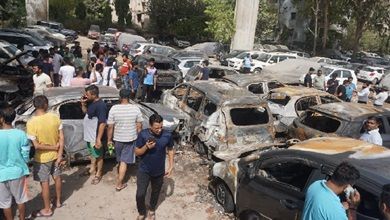After several incidents of fire in parking lots, the state fire services department has come up with guidelines for fire safety of parking structures provided as per the Unified Development Control and Promotion Regulations 2020 and the Maharashtra Fire Prevention and Life Safety Measures Act, 2006. They have suggested a ban on charging of electric vehicles in automated car parking towers, puzzle parking and basement parking among other things.
The guidelines mention that the increasing highrises in major cities has made providing car parking on the plot challenging for developers. Though minimum provisions are met, if designated spots are not allocated for extra cars or visitors car parking, these are either accommodated in the free open space of the building or in lanes or bylanes, which jeopardises fire and rescue appliances movement. This must be avoided, the guidelines state.
In a major fire at Lokhandwala complex last year, cars parked on an access ramp had to be physically lifted, and thus there are guidelines for multi-level parking. The guidelines also say that vehicles located in close proximity both horizontally and vertically have a high potential for rapid fire spread. Often, the entire car stacked portion of the building is a single fire compartment containing a large number of vehicles (very high fire load). This has to be avoided.
With the number of electric vehicles increasing, the guidelines also speak about parking for EVs. The guidelines say that when EVs are to be kept in a car stacker system, particularly in systems which enable charging, particular consideration must be given to the specific behaviour and hazards associated with EV fires. The design operational duration of various fire safety systems and/or additional fire safety provisions may be required. The charging facility for electric cars shall be provided in a ventilated area, said the guidelines, as many fires are uncontrollable when such fires occur in closed areas.
The lithium-ion battery systems of EVs are typically found in the floor pan of the vehicles, comprising thousands of individual cylindrical lithium-ion battery cells, and presenting a very high-density fuel source. Lithium-ion batteries typically ignite due to a chemical reaction. The challenge with these types of battery fires is that they continue to burn until the compounds contributing to the chemical reaction are exhausted and these fires cannot simply be extinguished by “usual” means, the guidelines said.








